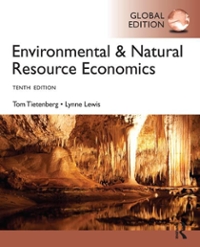Question
11A decrease in the equilibrium interest rate and an increase in the equilibrium quantity of loans made would result from: Select one: a.a decrease in
11A decrease in the equilibrium interest rate and an increase in the equilibrium quantity of loans made would result from:
Select one:
a.a decrease in excess reserves.
b.an increase in excess reserves.
c.a decrease in the demand for loans.
d.an increase in the demand for loans.
12Because of the money multiplier, an initial change in excess reserves in the depository institutions system can lead to a multiple change in the:
Select one:
a.number of institutions in the system.
b.amount of money required to secure a loan.
c.amount of required reserves needed to back a single deposit.
d.amount that can be loaned by all institutions, taken together, in the system.
13Decreasing the reserve requirement:
Select one:
a.reduces excess reserves and the money supply.
b.increases excess reserves and the money supply.
c.reduces excess reserves and increases the money supply.
d.increases excess reserves and reduces the money supply.
14Excess reserves are equal to:
Select one:
a.actual reserves minus vault cash.
b.required reserves minus vault cash.
c.actual reserves minus required reserves.
d.required reserves divided by the reserve requirement.
15Given the equation of exchange, MV = PQ, if the money supply is increased when the economy is operating at full employment the expected result will be an increase in:
Select one:
a.output (Q).
b.velocity (V).
c.the price level (P).
d.unemployment (Q-V).
Step by Step Solution
There are 3 Steps involved in it
Step: 1

Get Instant Access to Expert-Tailored Solutions
See step-by-step solutions with expert insights and AI powered tools for academic success
Step: 2

Step: 3

Ace Your Homework with AI
Get the answers you need in no time with our AI-driven, step-by-step assistance
Get Started


